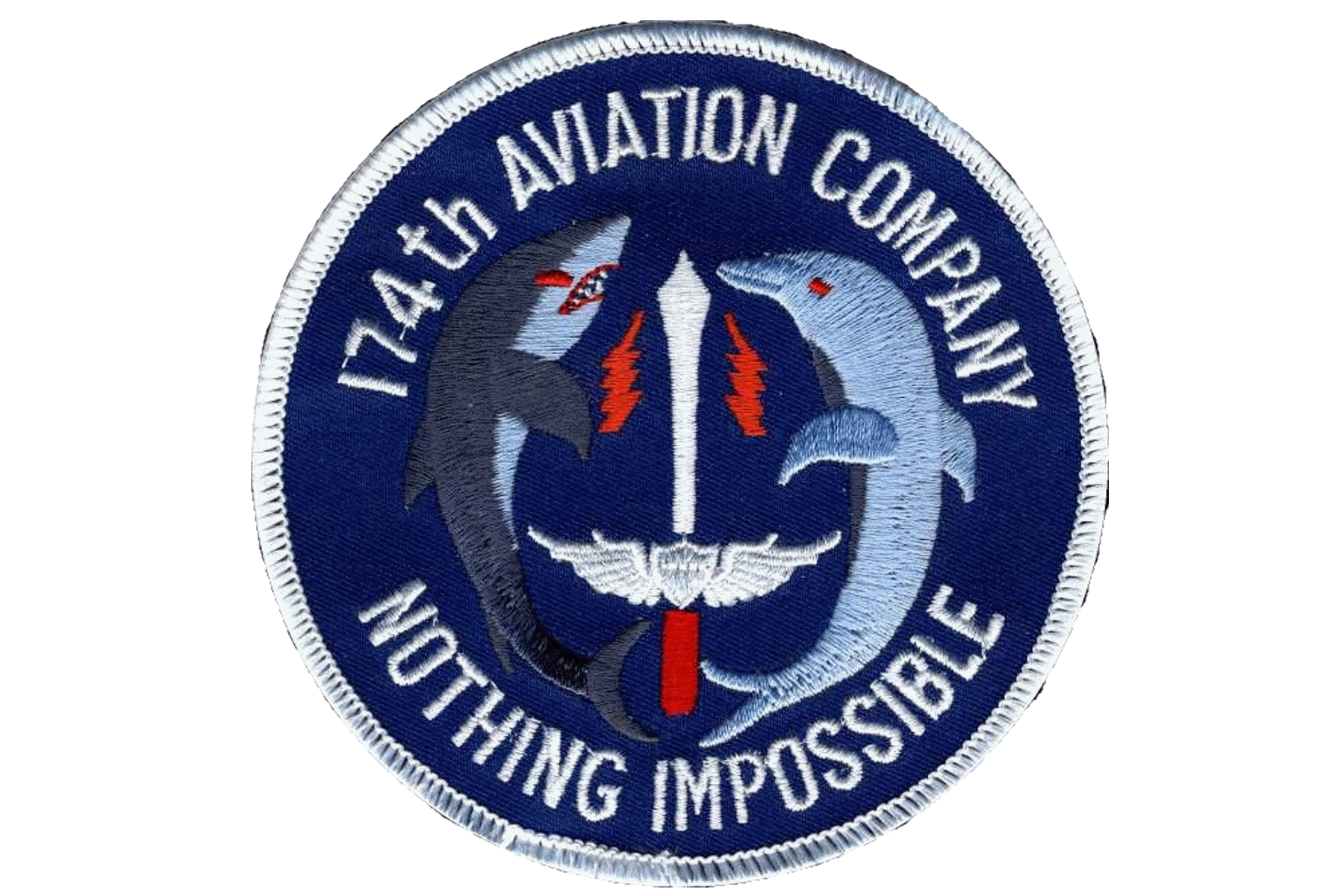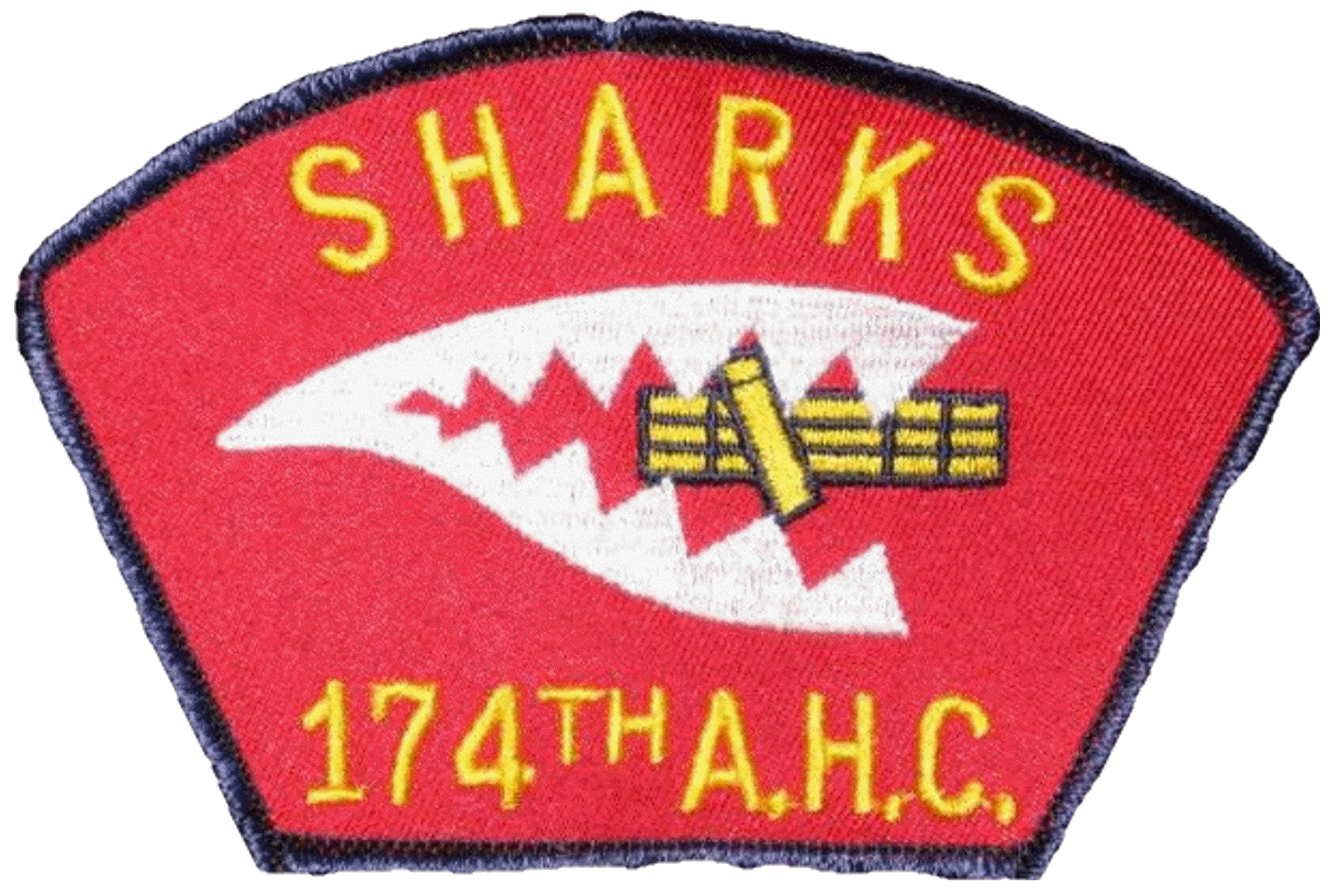174th Assault
Helicopter Company
DOLPHINS & SHARKS
Sergeant (E-5) David Lindsey's Photos Page |
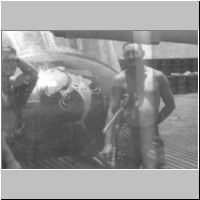 This is Pop Kelsey, one of the backbones of the 174th. Pop was a maintenance
Technical Inspector (TI), then on his third tour in Vietnam. Ron Conner met
him in Cameron Bay and rode a freighter with him up the coast to Chu Lai, then on to Duc Pho.
Ron says if you'll buy him (Ron) a drink, he'll tell you an intereting
story about that trip. Dave Lindsey is at the extreme left of the photo. |
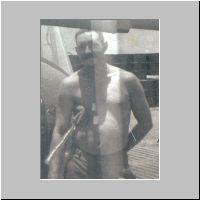 Close-up of Pop. |
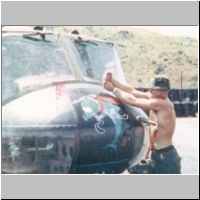 This is Dave Lindsey tightening down the avionics door cover following completion of the Dolphin nose-art work.
This is Major Wheat's aircraft, Dolphin 939. Andy Anderson was the crewchief on the Old Man's bird. Dave flew
with Andy and took over as crewchief when Andy left. Andy went on to
be a General's crewchief in Chu Lai when Americal was formed in the fall of 1967. Ron Conner was harassing
Dave and took these photos.
|
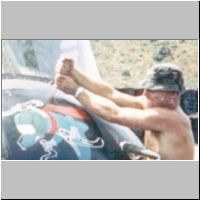 A closer look at Dave. |
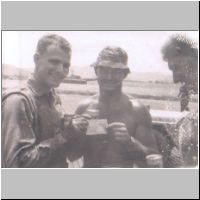 Dave Lindsey in the middle, holding what looks like a one dollar "MPC" (military payment certificate) note. Could
possibly be a Vietnamese note -- hard to tell. To the left is WO1 Dennis Glen Blackmon (KIA 19 Oct 1967).
On the right is Gerald White (Ron Conner's door gunner).
|
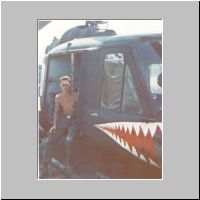 Doorgunner David stein (from Chicago). Note the Shark's teeth on this bird. All the Shark's
teeth were hand-painted, so each one was unique. This one was a bit unorthodox in that the teeth
got very small (and numerous) as they receded to the corners of the mouth. From a distance
the teeth lost their definition, and the crew chief who painted them took a lot of ribbing. |
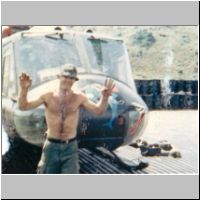 Dave in front of his Dolphin. Ron Conner also took this photo. |
 Dave (left) and Dolphin door gunner Ron Conner. Ron later became crewchief on Shark 165 |
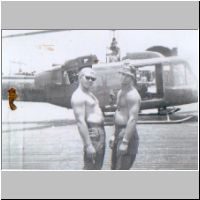 Same two belly-brothers (Dave on right) |
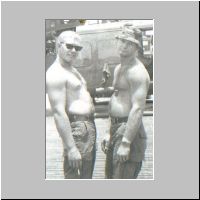 A closeup (just for the beauty of it). |
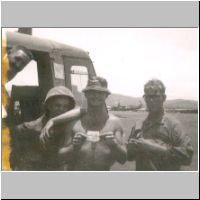 Dave with what looks like it could be a souvineer VC photo, but after MAX magnification it turns out to be just
the "belly-brothers" photo (above). Pop Kelsey is at the left (in the helicopter). In the hard hat is
Sergeant Jim Yocum, and on the right is Gerald White. |
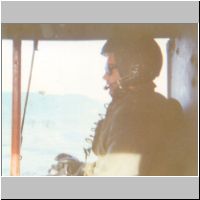 This is Dave in his office in Shark 105. Note the bungee cord attached to the roof of the aircraft.
The other end
is attached to Dave's M-60 machine gun. The bungee cord is quite elastic and quite strong, and allowed the gunners
a lot of flexibility with a "hand-held" machine gun, so they could lean out the aircraft to fire forward, rearward, or
down.
Often the Shark gunners would lean way out and step on the skids of the helicopter and fire down between the skids
to cover the aircraft during breaks. Dave fired his M-60 (on the right side of the aircraft) upside-down,
using the pinkey finger of his right hand as his trigger finger. M-60's eject their spent casings out the
right side of the gun, which on the right side of the aircraft would put all the spent casings out the door into
the slip stream or rotorwash. The purpose of firing upside down was to cause the spent casings to eject back into the
aircraft instead of overboard, where the rotorwash could blow them into the tail rotor. The red pole was used as an
"unsophisticated" forward firing limit (it was an aid but was not fool-proof) to help keep the doorgunner from
getting too carried away with the task at hand and inadvertently shoot up the pilot's door when firing the
M-60 forward during a gun run. And YES, it DID happen! (but not to Dave, he says). Several of the
Sharks had this pole, but Shark 105 was the only one with it painted red. When Dave was painting the
Sharks' teeth on 105, he had enough red paint, so he painted the pole red "just to be different." (Shark crewmen had
this thing about being different.) Also notice Dave's "cool" sunglasses. Dave notes that these were very functional,
for when the miniguns and rockets fired, they would often give off pieces of flying debris behind them that would
fly back into the gunner's arms and faces. Most Bravo- and Charlie-model gunship door gunners sported minor cuts
from this debris.
|
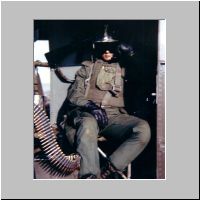 This is Dave in the Crewchief's position in the left door gunner's well of Dolphin 939. Dave was MAJ Wheat's crewchief at this time (after Anderson). The caption on the top of Dave's vest is, "A girl is just a girl, but a frog is a friend for life." This tidbit of wisdom came from Don Sherwood, a DJ on KSFO radio in San Francisco, who got it from Parky Sharky. Parky was a wino in San Francisco who often talked with Sherwood on the air. |
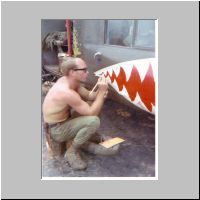 Here Dave is creating his own masterpiece on Shark 105. Note the red pole in the gunner's compartment
behind the wind break.
|
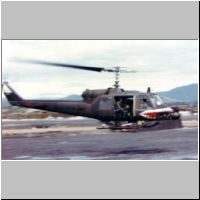 This looks like Shark 137. It's armed with a 40mm grenade launcher (a "Frog") on a turret on the nose.
This weapon was a "pee-bringer" to troops in the open. It fired 240 grenades per minute (that's
FOUR grenades per SECOND)! It also has two 7-shot pods of 2.75" rockets, one on each side of the aircraft.
To round out the armament, the crewchief and door gunner each had an M-60 machine gun and carried over
1,000 rounds each.
|
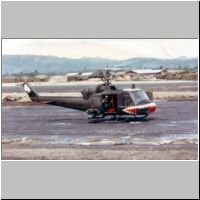 This is Shark 105. She was a "minigun ship," with a 7.62mmm minigun that fired 6,000 rounds per minute at the
fast rate and 1,000 rounds per minute at the slow rate (preferred to conserve ammo). She also has the 7-shot pods
of 2.75" rockets and the two M-60 armed door gunners. Note the red pole that was unique to Shark 105, and
if you look hard you can see the Shark's teeth Dave painted on his helmet. The crewchief of Shark 105 at this
time was A. Scheri. 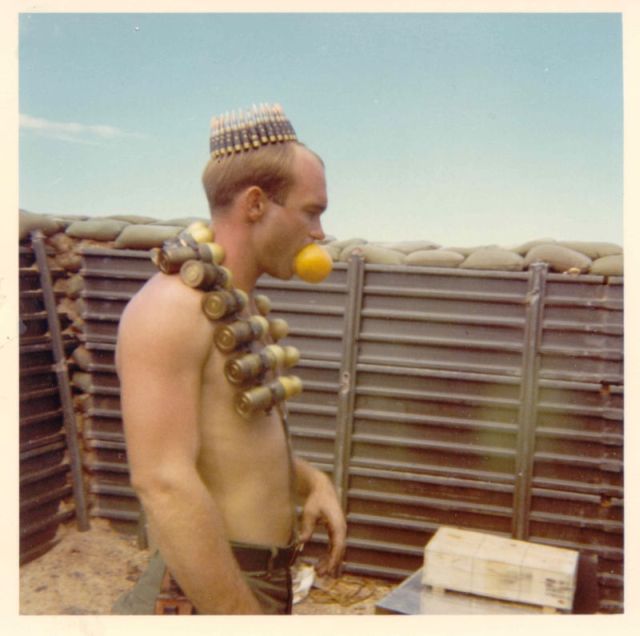 As I recall, the date here was July 4, 1967. The head and neck gear was, I suppose, my silent and symbolic display and my method of celebrating that historic event. In some small way, just for a moment, I felt like our time there would account for a piece of American history. As I cleaned my ship that day, I remember trying to recognize the importance of my job, and also how thankful I was to be sharing this experience with these men. That thought made me very proud inside and carried me through the bad moments. Otherwise that day, I guess, might have just passed by like any other day for this enlisted man. |
![]() Return to top of: 1967 Photos Page.
Return to top of: 1967 Photos Page.
![]() Return to top of: Home Page.
Return to top of: Home Page.
